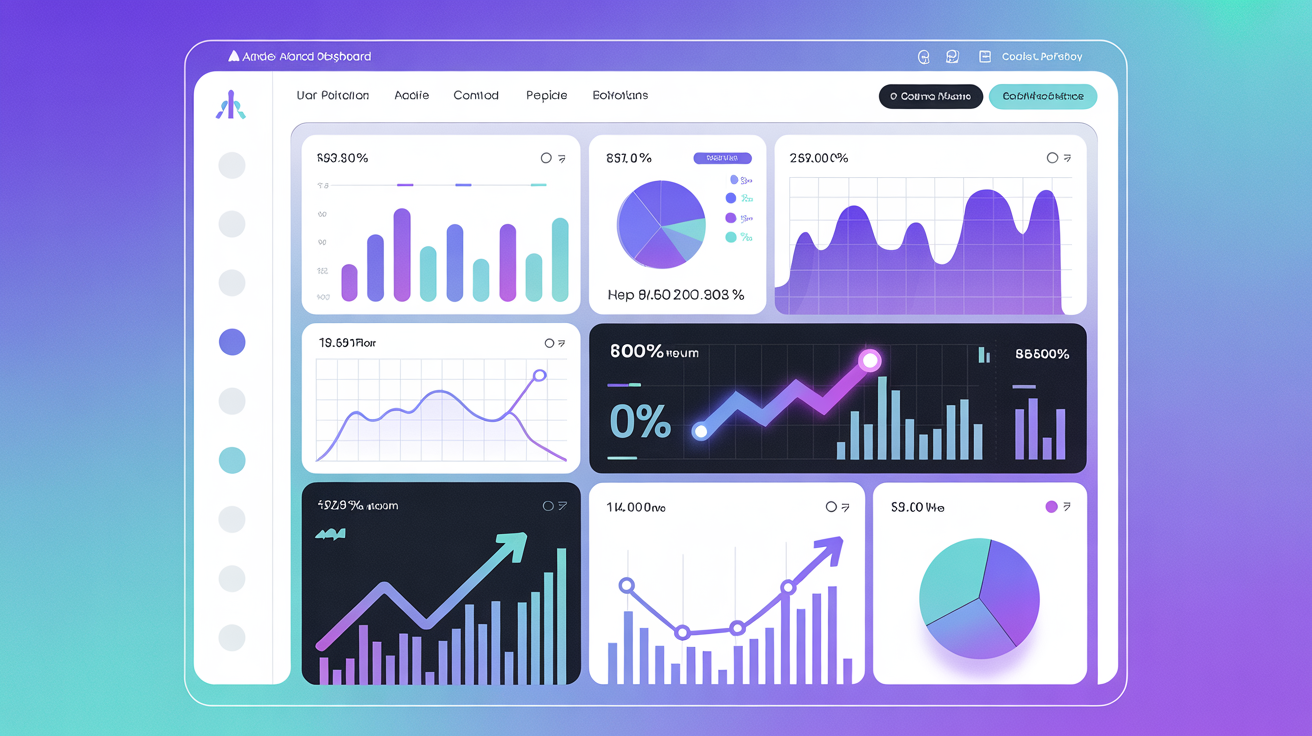Website analytics provide valuable insights into how visitors interact with your site. But if you're new to analytics, the sheer amount of data can feel overwhelming. This guide will help you understand the metrics that matter most and how to use them to improve your website.
Why Website Analytics Matter
Think of website analytics as a report card for your online presence. They tell you what's working, what's not, and where you should focus your efforts. Without this data, you're essentially flying blind, making decisions based on guesses rather than facts.
What analytics can tell you:
- Who is visiting your website
- How they found you
- What content they're interested in
- Where they're leaving your site
- What actions they're taking (or not taking)
Essential Metrics to Track
1. Traffic (Visitors and Sessions)
This is the foundation of your analytics—how many people are visiting your website.
Users: The number of unique individuals who visited your site
Sessions: The total number of visits (one person might have multiple sessions)
Why it matters: Tracking traffic over time shows whether your marketing efforts are working. Consistent growth is a good sign, while declining traffic may indicate problems.
What to do with it: Compare traffic from different time periods to identify trends. If you see a sudden spike or drop, investigate what caused it.
2. Traffic Sources
Understanding where your visitors come from helps you know which marketing channels are most effective.
- Organic Search: Visitors who found you through search engines
- Direct: People who typed your URL directly or used bookmarks
- Social: Traffic from social media platforms
- Referral: Visitors from other websites linking to you
- Paid Search: Traffic from paid advertising
Pro tip: If organic search is low, you might need to improve your SEO. If social is performing well, invest more in that channel.
3. Bounce Rate
Bounce rate shows the percentage of visitors who leave your site after viewing only one page.
What's a good bounce rate?
- 40-60%: Excellent
- 60-70%: Average
- Above 70%: Concerning (unless it's a blog or contact page)
Why it matters: A high bounce rate might mean visitors aren't finding what they're looking for, your content isn't engaging, or your site loads too slowly.
4. Average Session Duration
This metric shows how long, on average, visitors spend on your site.
What it tells you: Longer sessions usually indicate engaged visitors who are interested in your content. Very short sessions might mean your content isn't relevant or engaging.
Benchmark: Aim for at least 2-3 minutes for most business websites.
5. Pages Per Session
The average number of pages a visitor views during one visit.
Why it matters: More pages viewed usually means visitors are exploring your site and finding valuable content. If people only view one page, they might not be finding what they need.
6. Conversion Rate
Perhaps the most important metric—the percentage of visitors who complete a desired action.
Common conversions to track:
- Contact form submissions
- Phone calls
- Product purchases
- Newsletter signups
- Resource downloads
Average conversion rates: Most websites see conversion rates between 2-5%. E-commerce sites typically see 1-3%.
Understanding User Behavior
Popular Pages
See which pages get the most views. These are your "star performers" and deserve special attention.
What to do: Make sure your most popular pages have clear calls-to-action and are optimized for conversions.
Exit Pages
The last pages people view before leaving your site. High exit rates on important pages might indicate problems.
Red flags: High exit rates on product pages, pricing pages, or checkout pages need investigation.
Site Speed
How quickly your pages load. This has a huge impact on user experience and SEO.
"40% of users abandon a website that takes more than 3 seconds to load." - Industry Research
Setting Up Your Analytics
Google Analytics 4 (GA4)
The most popular free analytics tool. GA4 is the latest version and offers powerful insights into user behavior.
Getting started:
- Create a free Google Analytics account
- Add the tracking code to your website
- Set up goals/conversions for important actions
- Let data collect for at least a week before drawing conclusions
Making Sense of Your Data
Don't Get Lost in the Numbers
It's easy to get overwhelmed by data. Focus on the metrics that directly relate to your business goals.
Look for Patterns
Single data points don't tell the whole story. Look at trends over weeks and months to understand what's really happening.
Take Action
Analytics are only valuable if you use them to make improvements. Identify problems, test solutions, and measure the results.
Quick Wins to Try
- Identify your highest-traffic pages and make sure they have clear calls-to-action
- Find pages with high bounce rates and improve their content or design
- Look at your top traffic sources and invest more in what's working
- Check mobile vs. desktop stats and ensure both experiences are optimized
- Set up conversion tracking for your most important business goals
Need Help with Your Analytics?
Website analytics can be complex, but they're crucial for growing your business online. If you're unsure how to interpret your data or want help optimizing your website based on analytics insights, we're here to help.
At Gizseo, we not only build beautiful websites—we also help you understand and improve their performance. Our team can set up comprehensive analytics tracking, provide regular reports, and recommend data-driven improvements.
Contact us to learn more about our website analytics and optimization services.


